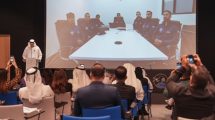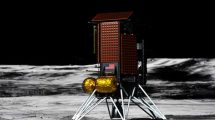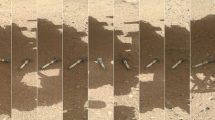
Space Systems/Loral, is teaming with NASA’s Goddard Space Flight Centre to host a laser communications relay demonstration (LCRD) on a commercial satellite to be launched in 2016. NASA’s Space Technology Programme selected Goddard’s mission proposal to use the SS/L satellite platform to help enable the next era of space communications.
Optical communications use an uncongested portion of spectrum compared to the radio frequency (RF) communications currently used to transmit data from space. Additionally, laser communications (lasercom) has the potential to provide higher data rates than RF, providing the potential to enable access to much more of the vast amounts of data that are being gathered from distant planets, including images and video. For commercial satellites, lasercom could provide data at rates that are faster than today’s RF rates, with much less mass and power, which are the typical constraints on satellite design.
For commercial satellites, lasercom could provide data at rates that are faster than today’s RF rates, with much less mass and power, which are the typical constraints on satellite design.
“We are excited to be a part of this mission, which is particularly interesting because of the great potential for laser communications to revolutionise space exploration as well as the commercial satellite industry,” said John Celli, president of Space Systems/Loral.
Space Systems/Loral is working with NASA Goddard’s LCRD team to determine the technical requirements for the instruments to be integrated with the SS/L 1300 satellite platform. As the optical modules and ground stations are in development, SS/L will work with its commercial customers to identify an appropriate host satellite for the demonstration.
“The Space Systems/Loral platform provides NASA with the opportunity to demonstrate new technology on an operational satellite,” said Michael Weiss, project manager, at the Goddard Space Flight Centre. “Once proven, the technology that we are demonstrating will revolutionise future communication systems. The use of optical communication technologies in a network environment will meet the growing needs of high data rate user demands while also enabling lower mass and power for space and ground communication systems.”
The lasercom spectrum is used lightly at present; however, due to its very narrow beam widths compared to RF, even if it were heavily used, multi-user interference is not a limiting capacity factor.
The Space Systems/Loral platform is particularly well-suited to hosted payloads because of its size and high power capability and SS/L has many years of success in integrating government payloads onto commercial spacecraft. The company built Intelsat-14, which hosted the first commercial Internet Router in Space (IRIS) and was successfully launched in 2009. SS/L also built Optus-C1 for Singtel Optus, which was launched in 2003. Optus-C1 provides commercial communications services in Australia and also hosts a UHF payload for the Australian Defense Force. SS/L also integrated a navigation payload for theEuropean Union onto SES-5, which is scheduled to launch later this year.
“We are fortunate to have this opportunity to collaborate with the visionaries on the Goddard Space Flight Center team,” saidAl Tadros, vice president, government and civil missions at Space Systems/Loral. “By selecting this project, NASA’s Space Technology Programme is not only investigating next generation technologies, but it is taking the lead in leveraging the benefit of commercial satellites for faster and less costly access to space. We applaud NASA for being proactive in the face of austere budgets to ensure continued science and technology advances.”
Lasercom, which is also known as free-space optical communications, operates in the mid-wave infrared band of the electromagnetic spectrum, around 200 Terahertz (THz). This un-regulated and un-licensed part of the spectrum, which is eye safe, is four orders of magnitude higher than the radio propagation bands used today for satellite and other wireless communications, which are approximately 20 Gigahertz (GHz). The corresponding increase in bandwidth effectively eliminates spectrum as a constraint for all applications, including the highest resolution imagery payloads and scientific sensors.
The lasercom spectrum is used lightly at present; however, due to its very narrow beam widths compared to RF, even if it were heavily used, multi-user interference is not a limiting capacity factor. Compared to high bandwidth RF links, lasercom terminals are approximately one order of magnitude lower in size, weight and power consumption, and are therefore suitable as hosted payloads over a broad range of satellites and spacecraft.












Add Comment